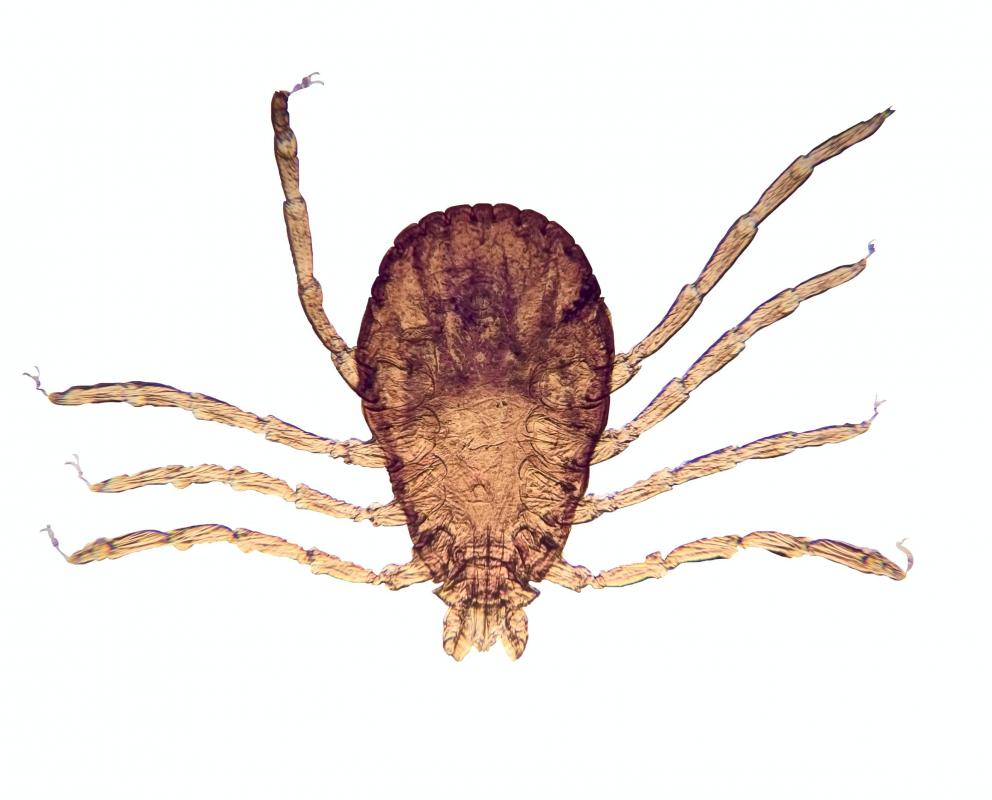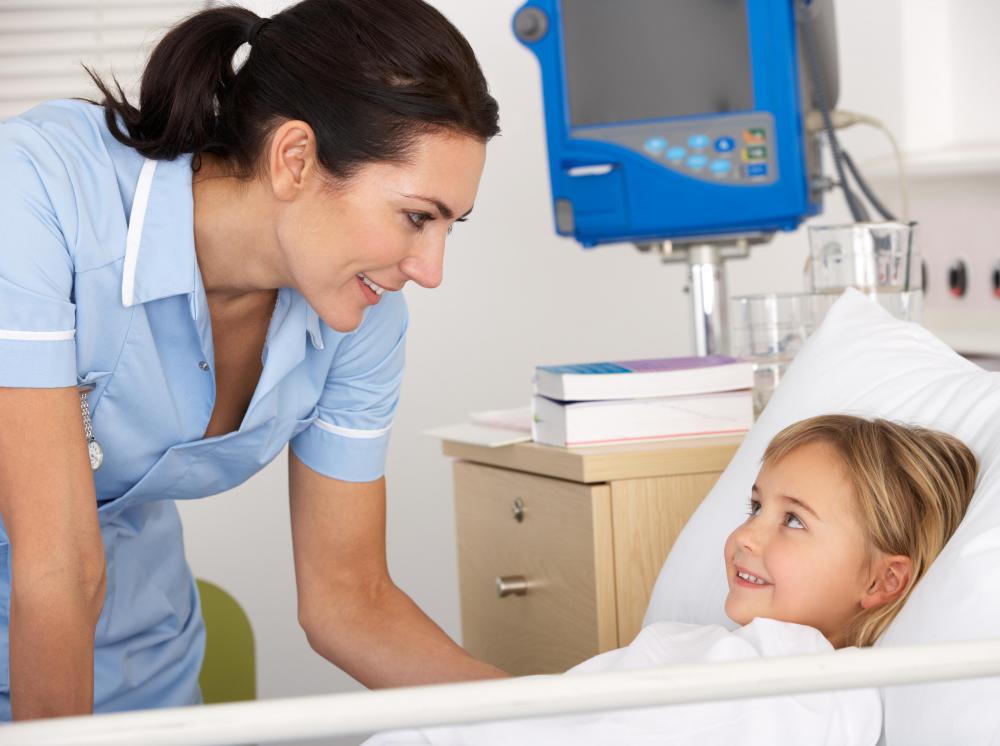At TheHealthBoard, we're committed to delivering accurate, trustworthy information. Our expert-authored content is rigorously fact-checked and sourced from credible authorities. Discover how we uphold the highest standards in providing you with reliable knowledge.
What Causes Petechiae in Children?
Petechiae in children can be caused by a number of different things, but viral and bacterial infections are among the most common — and also the most serious. The three most concerning tend to be meningococcal sepsis, Rocky Mountain spotted fever, and a Staphylococcus infection. Not all instances of outbreak are so problematic, though. It’s often the case that the condition happens as a result of broken capillaries, which is common after bruising or other trauma. Kids who have bad colds or respiratory infections that cause violent coughing may also see red on the head and neck as a result of cough-related muscle strain. In rarer cases the condition can be caused by certain genetic conditions and joint disorders, too.
Condition Basics

The condition known medically as petechiae is basically any instance of skin spots that happen as a result of bleeding underneath the skin. They can look like a rash, and are usually red but may also be purple or brown. In most cases the spots aren’t itchy or raised, though, and they don’t usually respond to topical creams. They only way to treat them is to figure out what’s causing them. It’s usually true that the things that cause the condition in children are the same as the things that cause it in adults. Kids are often more prone to certain infections, though, and may get these spots more frequently as a result.
Viral and Bacterial Infections

Meningococcal disease, a contagious disease more common in the spring and winter months, typically affects about 10% of children exhibiting petechiae-like symptoms. In these cases the spots might appear along with fever, headache, and muscle aches. They often start small and increase in size. This disease is spread through contact with oral or nasal fluids, and is treated with antibiotics, usually given intravenously in a hospital.

Rocky Mountain spotted fever might produce petechiae on the wrists and ankles of children, but some youngsters never actually show outward signs. The disease is most commonly carried by ticks; when ticks bite people, they transfer bacteria from their saliva into the blood. Symptoms might not appear for up to two weeks, but once they come they are usually quick to set it. A child might become ill very quickly with a high fever, requiring antibiotics to treat the disease. It can be fatal if not diagnosed and treated early.

Staphylococcus, a bacterium spread by contact with open wounds, may also cause petechiae in children. Staph infections cause many diseases, with more than 30 types afflicting humans. Symptoms might be mild or severe, and typically are treated with antibiotics.
Broken Capillaries
It’s also very common for petechiae in children to appear as a result of capillaries breaking under the skin. This can happen for a number of reasons, usually involving some sort of trauma. Young children are especially prone to these sorts of spots as a result of intense coughing if their muscles aren’t strong enough to contain the force of the coughs.
Purpura

A condition known as Henoch-Scholein purpura can also be a cause, though this is much rarer. Among other things, this condition causes petechiae on the legs and buttocks, and tends to be most common in children between two and ten years old. Some children also develop swelling and pain in the joints and abdominal pain. These symptoms generally resolve within a few days, but might cause kidney damage in isolated cases. Pediatricians often recommend frequent urine tests up to six months after the disorder is first detected to check for renal complications.
When to Get Help
The spots associated with petechiae can be alarming for any parent, though doctors usually say that there’s no cause for real concern, at least not at first. In many cases the condition will clear up on its own after a few days. Spots that last for more than a week should typically be checked out, though, as should patches that grow, move, or change color. Early screening and detection can be essential in the case of something serious.
AS FEATURED ON:
AS FEATURED ON:















Discussion Comments
When my son was recovering in the hospital after a surgery, he came down with a staph infection. I always thought a hospital would be a sterile place and never would have guessed he would come down with this infection from the hospital.
Come to find out, it is quite common because this is so highly contagious. His first symptoms were a rash on his arms and chest. At least he was in a place where he could get treated right away.
It kept him in the hospital longer than what we were hoping for, but I am thankful it was caught early and wasn't too severe.
@honeybees - You are fortunate the petechiae rashes in your children weren't serious. My daughter had to have intravenous antibiotics in the hospital after coming down with a rash and fever.
They finally determined it was from a tick bite that had happened at least a month earlier. At first they tried to get this under control with oral antibiotics, but that wasn't working.
It was pretty tough seeing her in the hospital getting her antibiotics that way. Now I am really cautious about my kids going outside or playing in the grass.
We like to trail ride with our horses, and I always make sure they have long sleeves on and are wearing insect repellent.
Whenever I see any kind of skin rash in my children, I always watch it very closely. If I know they haven't been outside where they could get into something poisonous, I am always suspicious.
If I see it starting to spread, get worse, or they start running a fever, I like to find out what is going on.
Many times getting small red bumps is completely harmless and can be cleared up using an antibiotic cream, but sometimes there is something more serious going on.
Every one of my kids has had some kind of infection that caused them to have some petechiae spots, but thankfully none of them have been of the serious kind.
We live in Colorado, and any time we get back from a hike or backpacking trip, I always make sure we don't have any ticks on us.
Once in awhile you will hear a few cases of a child getting Rocky Mountain spotted fever, and this can be really serious.
I remember hearing that one boy died of it because he didn't receive treatment in time. Because the symptoms can wait for awhile before they appear, it is hard to track down the cause.
It is also easy to just think they have a virus or case of the flu and it would be easy to wait a few days and see what happens.
If we ever get a high fever that won't stay down for more than a few hours, I am calling my doctor. When it comes to high fevers, I would much rather be safe than sorry.
@alisha-- I don't think you have Crohn's disease like @ysmina mentioned. You said you had blood tests done already. If you had Crohn's, your platelet count would be off and your doctor would have taken notice of that.
You might not be sick right now, but have you had the flu recently? Petechiae can show up after a viral infection too. A bad bout of vomiting or even intense crying can be causes of petechiae rash in children. My daughter used to get it sometimes as a toddler when she cried for too long.
If it comes and goes, you might want to jot down when it happens and what you were doing previously to pin down the cause.
@alisha-- How old are you?
Have you been checked for Crohn's disease? I have had Crohn's disease since I was a child and I get the petechiae rashes whenever I have a flare. It was one of the first symptoms I had when I was eight and my doctors also hadn't found anything wrong with me for a while.
Vitamin deficiencies and liver problems seem to be one of the main causes of this. And doctors tend to check for these first. Not just because I have Crohn's, but I do believe that petechiae is a sign of a problem. It doesn't have to be serious, but there must be a reason for it.
I don't mean to alarm you or anything. But I do recommend that you talk with your parents and have them take you to another doctor. It's better to put your mind at ease than to keep wondering what's going on.
I've been getting petechiae purpura on particularly my arms for several months and I don't know what's causing it. I went to the doctor, had a physical and blood tests done but they couldn't find anything. I also don't have an infection, cold, fever, coughing or anything like that.
They seem to appear more heavily in the mornings and slightly fade by the end of the day. Do you think it's simply caused by pressure? I do sleep on my side a lot, however, the petechiae develops even on the arm that I don't sleep on.
My doctor said that I'm fine and that this will probably resolve itself. But I'm still worried and not sure what I should do.
Post your comments